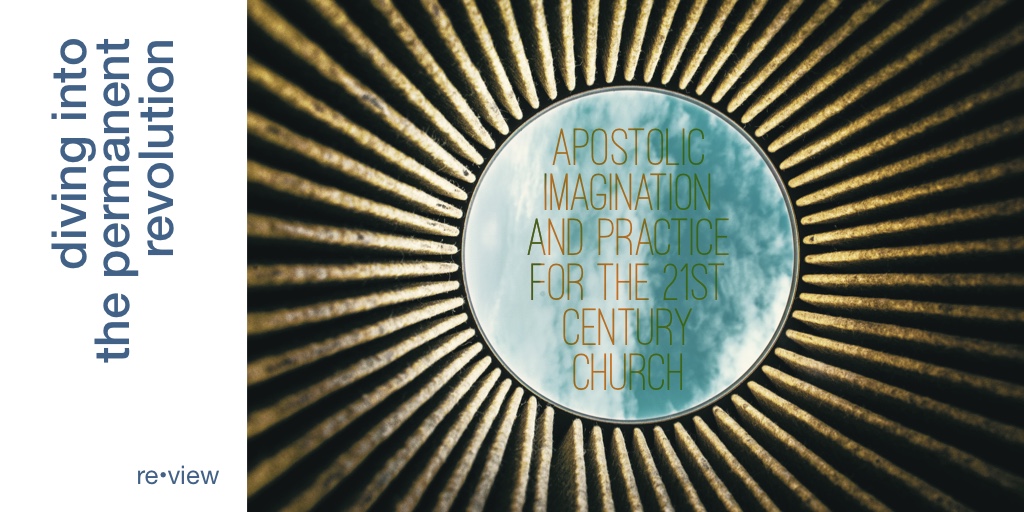In a chapter in Organization at the Limit, a book dedicated to analyzing the organizational dynamics that contributed to the Columbia space shuttle disaster, William Ocasio discusses the unique connection between language and organizational activity. Applying an analysis of the language used and how it points to deficiencies in thinking, Ocasio points to the subtle yet powerful capacity of language to focus our attention as well as to blind us to seeing problems when they occur. The language we commonly use can greatly influence what gets noticed and what gets ignored.
5Q in 52: How to Use APEST to Determine Your Annual Teaching Calendar
Today’s post is from one of our favorite authors, Jon Ritner, pastor of Ecclesia Hollywood. In his new article, Jon shares how he is integrating APEST into his year long preaching calendar. If you have been asking the question, “How do I preach this stuff?”, we believe this is going to help you! Bring 5Q to your congregation every week by adjusting the way you think about calendaring the Scriptures to include a three dimensional grid where Sections of Scripture, Major Discipleship Themes and APEST intersect. We look forward to your comments and contributions on this!
Digging In To The Permanent Revolution
Today’s blog post is a review of The Permanent Revolution by Len Hjalmarson. If you haven’t read this paradigm breaking work, The Permanent Revolution is a sort of autopsy of Movements. Alan Hirsch and Tim Catchim open up the anatomy of what it takes for a movement to happen, what it takes to make movements stick and provide a new strategy to awaken the Apostolic Imagination of the Church of the 21st Century. For an even better understanding of the book, check out this review! Len Hjalmarson has done a great job of working through the structure of the book and synthesizing the key points and ideas. Some of the 5QCollective team have read this book through many times. Hjalmarson has us gearing up to read it again.
Keeping The Connections From Christ To 5Q
Recently, Alan tweeted something that created a fantastic opportunity for discovery.
Click here to follow him on twitter.
So, this week, we are going to explore the three dimensional connections that are rooted Jesus and extend from Father to his people, the Church. What we see is that,in Christ, God is connected to the world through the fivefold gifts of the Body of Christ. So let’s take a look.
The Love of Christ and the Fullness of God
Deeply embedded in the assumptions of the whole APEST/Five Fold conversation is the understanding that Ephesians 4:11 is moving the church somewhere; there is a destination in the mind of the Apostle, namely Ephesians 4:12, “His purpose was to equip God’s people for the work of serving and building up the body of Christ until we all reach the unity of faith and knowledge of God’s Son. God’s goal is for us to become mature adults—to be fully grown, measured by the standard of the fullness of Christ.”
The five fold gifts Jesus gives to the church aren’t a jam of the month club that shows up at your door and overcrowds the refrigerator shelf. These are capacities that are meant to be activated in the Body. They are personalities that are exercised in the people. They are grace at work in the most surprising of ways.
APEST as The Defining Marks of The Church
APEST as the defining marks of the church presents us with an outstanding, ready-made, inbuilt, and theologically robust, way to assess the church’s overall spirituality, ministry, and effectiveness. And we are effectively making an assessment against the ultimate benchmark of all Christian ministry—the ministry of Jesus Christ himself. Having then identified relative strengths and weaknesses, we can then go on to develop appropriate leadership and organizational strategies to suit.
Operating System Of Apostolic Movement
Every so often, you run across a book that is so immanently relevant and so incarnately applicable it’s ridiculous. Obviously, we believe this to be true about the new 5Q book and the more dominant titles, like The Permanent Revolution and The Forgotten Ways, however, there are alot of resources in this conversation. If you haven’t read On The Verge: a journey into the apostolic future of the church, we believe that you are overlooking something significant. In all truth, this is not a sales post. While, you should totally pick up a copy, the reason is that On The Verge is a handbook that takes ideas and turns them into action. The authors, Alan Hirsch and Dave Furguson have created a field guide, a creative companion for on the ground apostolic discovery.
The 5 Dimensional Body Of Christ
One does not have to look very far to see evidence of a one-dimensional and immature approach to organization. For instance, a precocious apostolic leader/church will always tend to see the organization’s problems as being caused by a lack of more distinctly apostolic approaches, whereas the real answer might well be that the group needs more by way of the self-correcting dynamic of one or more of the other four functions.
In order to be an authentic expression of the Body of Christ, each of the APEST functions need all the other functions in order to be healthy themselves (Ephesians 4:12–16). The real answer to our complex problems is seldom one-dimensional.
How You Can Keep Apostles Engaged In Your Local Mission
Today, we are answering another question from the community: I am currently serving in a legacy/traditional church that has fallen into the same traps of consumerism that most other churches have fallen into these days. We have been working through APEST concepts and understandings of roles for the last three or four years and I have had the vast majority of the congregational leadership take the APEST survey. I need to know how to disciple the apostles in the congregation, of whom the vast majority are successful businessmen who travel quite a bit. How do I work with them as the outliers of the church expression in our community, when most of them probably are better connected and more comfortable outside of the community? How do you do it?
Using 5Q as a Missional Lens to see your Community
When it comes to incarnational, relational mission, there is never a one-size-fits-all approach. Each community (either a neighborhood or a relational network) is unique, and so are the people it comprises.
One of the biggest mistakes we can make when trying to share Jesus with a community is to go in all guns blazing, with all the “right answers.” Even the Son of God, who was perfectly capable of providing all the “right answers,” didn’t do that. Think about how many times Jesus asked questions as a way of engaging with others. And he entered our world weak, as a baby, and lived among us for thirty years before beginning his public ministry. He chose to be vulnerable and to engage in dialogue.










